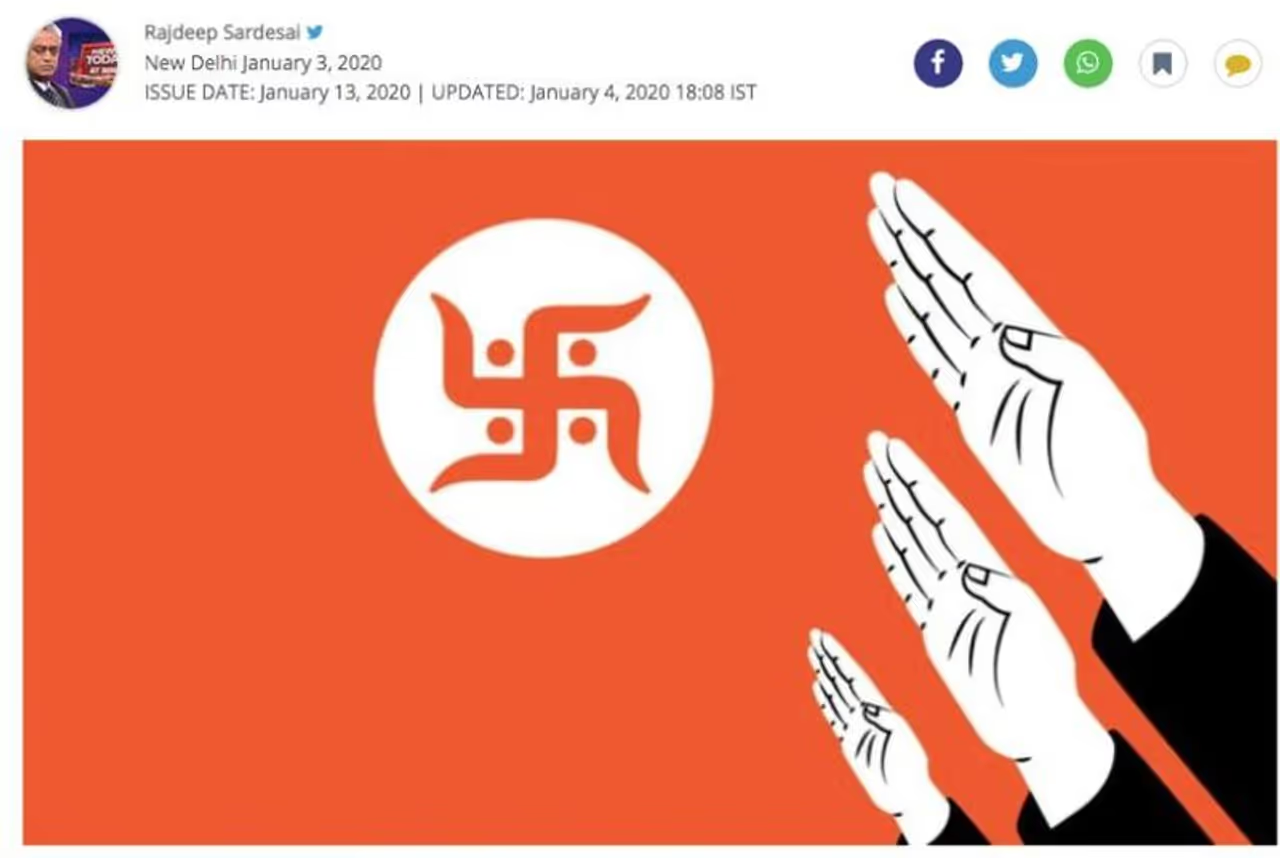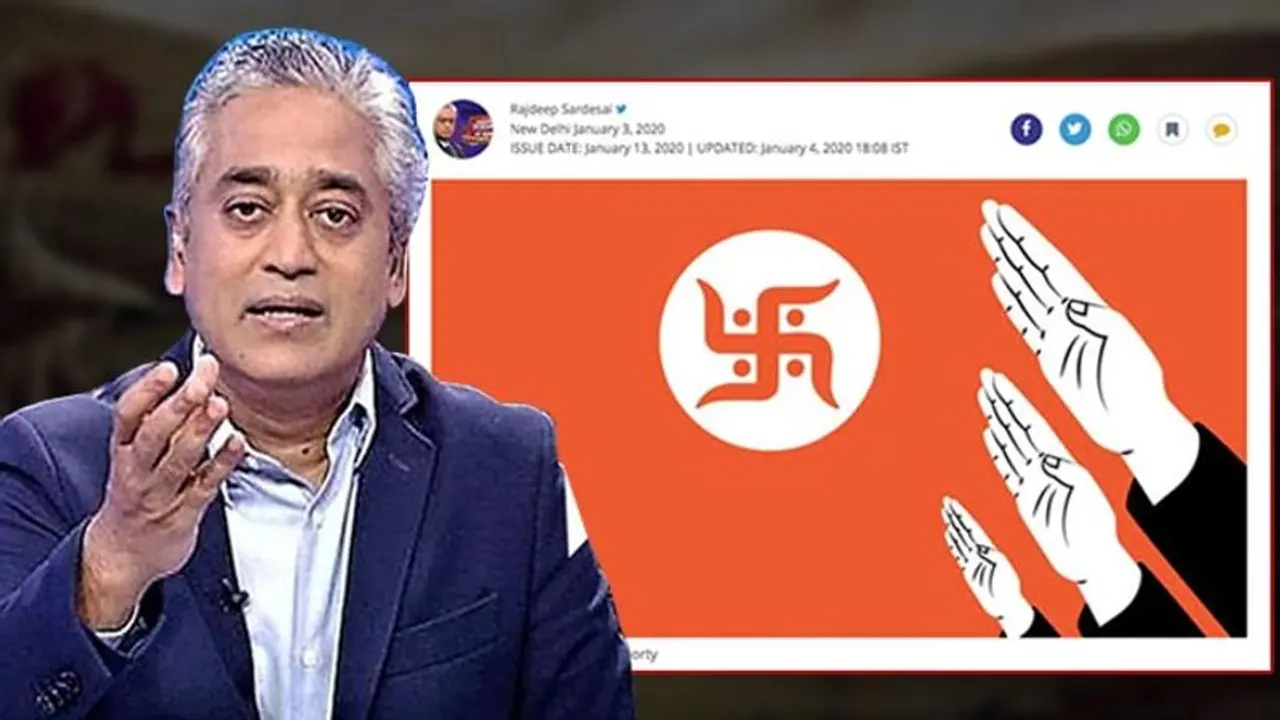In a tweet, journalist Rajdeep Sardesai put out a picture containing a picture of the holy Swastika with a saffron background to resemble that of the Nazis, with a three-palm salute, probably to convey that Hindutva is taking over
Bengaluru: Notorious for his anti-Hindu and Left-leaning trait, Rajdeep Sardesai, the controversial journalist doesn’t think twice before getting into fisticuffs and goes on lecturing and issuing polemics and diatribes against anything he feels is Hindu and therefore a threat to the secular fabric of India, put out a tweet which a few palms are seen saluting Swastika, corrupted to resemble the Nazi symbol of Germans.
In effect, he was sinisterly trying to convey that Hindutva, not just a pejorative term, but also a concept which they abhor and try to annihilate, was taking over the country.

Though the Nazi symbol resembles oppression, suppression, subjugation and mortification, the Swastika, on the diametrically opposite side, is a symbol that conveys anything and everything positive and one that is revered by millions of Hindus worldwide.
While the Left-leaning thugs masquerading as journalists don’t retract from their efforts and endeavours to hurt, humiliate and harass the sacred Hindu symbol, we thought of delineating on the important aspects of the holy Swastika.
The word ‘Swasti’ means prosperity. Therefore, Swastika is a symbol of everything that is holy and pure.
Astronomically, when the Big Bang explosion took place, the energy that scattered as a consequence was in the shape of the Swastika.
The symbol also has a pivotal role to play among Hindus and the four arms of the Swastika represent a myriad concepts.
1. The four arms represent the four directions (North, South, East and West)
2. The four arms represent the four vedas (Rig, Yajur, Sama and Atharva)
3. The four arms represent the four purusharthas (Dharma, Artha, Kama and Moksha)
4. The four arms represent the four ashramas (Brahmacharya, Grihastha, Vanaprastha and Sanyasa)
Interestingly, the Swastika also represents the Sun god, a raison d'être for the sustenance of life and prosperity on earth.
A spiritual thinker Sarva Pillai Iyengar only adds to its significance. He says, “The symbol is a representation of Hinduism. In our agama shastra, as many as eight auspicious symbols have been described. One among them is the Swastika. Not just Hindus, even Sikhs and Buddhists revere it. They can be found in stupas and viharas. It can be traced back to the days of the Harappan culture.”
